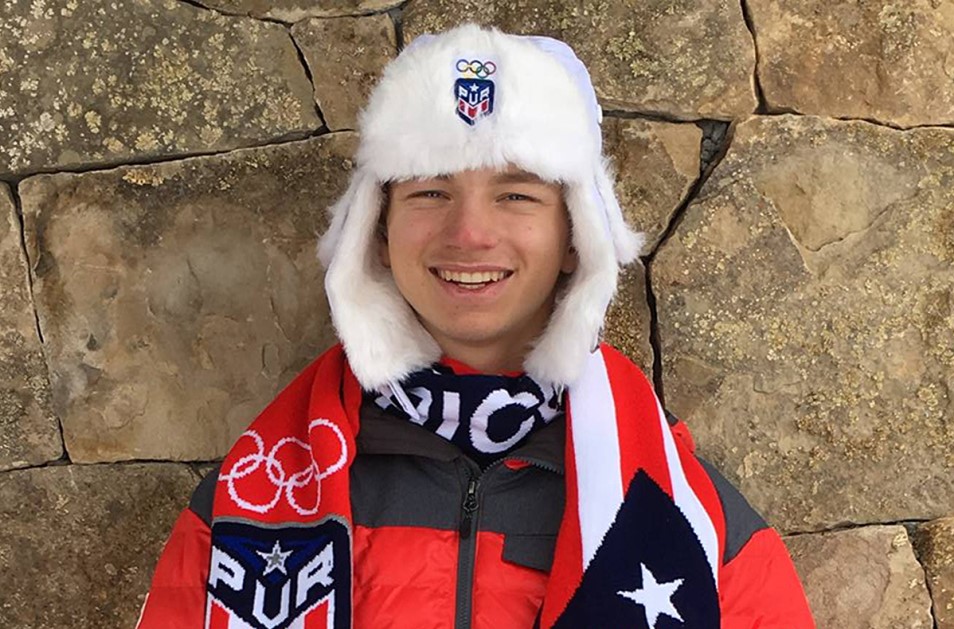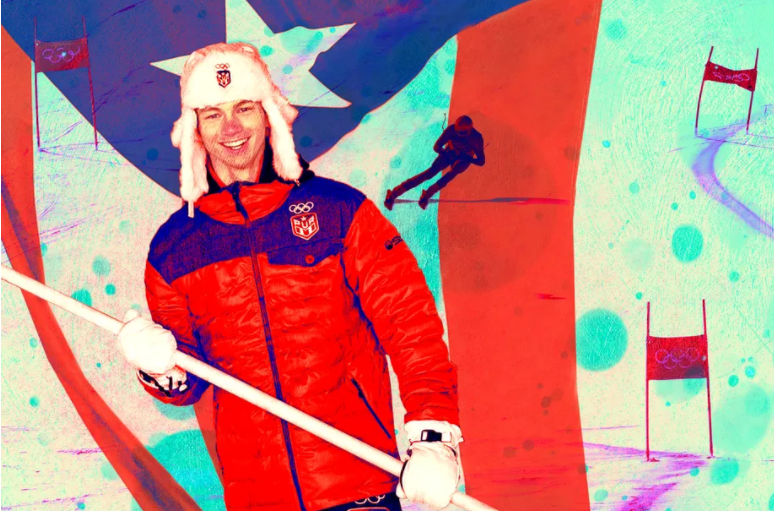SEOUL — Charles Flaherty doesn’t remember thinking that he was about to give his bones — and therefore his life — to his younger brother, but that’s the story they tell him.
At seven, Flaherty would donate the bone marrow that his younger brother William, then three, needed to fight hemophagocytic lymphohistiocytosis, a life-threatening immunodeficiency disorder.
He thought, however, that he would be donating his skeleton.
That’s one of the anecdotes from that trying year that were passed along to Charles secondhand. His own recollection includes smaller, different details: the midday emails his parents sent to his teachers to update him on William’s progress; the month of isolation while William was in chemo; the moments after he was awoken out of anesthesia, post-procedure, to help comfort his brother.
This entire ordeal, one that fewer than 20,000 Americans undergo each year, is significant for Charles, now 17, and his family for obvious reasons. William, now 13, is healthy. But this series of events was also the catalyst to an Olympic milestone for Puerto Rico: On February 18, Charles, an Alpine skier from Cincinnati, will become the first athlete to compete for the island in the Winter Olympics since 1998.
It seems far-fetched to pair an Olympic skiing berth with a bone marrow donation. But call up two of the engineers behind this run — Charles’s mother, Ann, and the president of the Puerto Rican Federation of Winter Athletes, Antonio Colón — and they’ll both start with the same anecdote. “It started with a dream, and a little bit of health issues and political situations,” Colón told me.
Ann put it more directly: “I think to really get to the start of it, you have to go all the way back to 2008.”
In 2009, after what Ann calls the family’s “year from hell,” the transplant was complete and William was on the mend, and Charles and his father went to Colorado for a ski trip. Charles was neutral about the sport at first. He felt like a duck with skis on, but it was a nice distraction from what was going on at home.
The next year, the family moved to Puerto Rico for his father’s work, and skiing became a yearly family vacation. The g-forces involved in skiing helped strengthen William’s bones, which had been weakened by chemo and steroids. By 2013, the boys were no longer just hobbyists. They started competing with a ski club in Colorado, and Charles realized he wanted to take skiing seriously. It was time for a personal coach, and if possible, a full-time commitment.
Here, Charles recognizes the importance of the events of 2008. If his parents hadn’t come so close to losing a child, would they have been willing to uproot the family to Puerto Rico? Would they have let their eldest son pursue a costly and time-consuming passion?
“I don’t know if we’d still be in Cincinnati,” Charles says. “I don’t think we’d be as open to dropping everything to pursue skiing. After that, my parents definitely took a ‘life’s short’ view of everything.”
The Flahertys hired Sara Radamus, a veteran coach with the Ski & Snowboard Club Vail, in October 2016 to help Charles pursue a dream that seemed to be a long shot. When asked whether she imagined that Charles would be her first pupil to become an Olympian, Radamus began to laugh.
“No, no,” she said. “There’s not one person I was around that would ever think that. His skiing skills were very little, but I thought, I’m going to give it my best shot and he’s going to give it his best shot. I’m very goal oriented, and he’s very goal oriented. When we started it was the furthest dream ever.”
At Flaherty’s age, most competitive skiers likely had 10,000 days on the slopes; he had about 50. Radamus approached the situation pragmatically. She had to use Charles’s passion to make up for his lack of experience.
To qualify for an Olympic spot in Alpine skiing, an athlete needs to fulfill two requirements: (1) meet the required International Ski Federation points and (2) compete under the banner of a recognized National Olympic Committee. Many athletes in the United States reach the recognized IOC points cutoff, but are competing for limited U.S. Olympic spots. Charles’s overall scores wouldn’t earn him an Olympic place in a larger country with more competition, but if he could reach the cutoff and get Puerto Rico to recognize a winter team, he could have a shot at competing in Pyeongchang.
So Radamus and Charles began training and entering FIS-recognized competitions. The crux of Alpine skiing, Radamus explained, is in “keeping your body really quiet,” in other words, managing to maintain composure and control physical overreactions. If, for some reason, a racer comes into a hill too much and loses control of their outside ski, they need to be able to retain speed and gently equalize that balance. Those sorts of recovery moves are natural for snow-town natives who were on skis at the age of 3, but at the time, they were foreign to Charles.
Charles is a self-described type A. He’s a high school junior who reads whenever possible and hopes to one day study aerospace engineering. He approached the challenges of skiing methodically, and this process helped him master technical skills he could hone on a week-by-week basis. An Alpine skiing run is like “doing 40 single-leg squats in less than a minute,” Charles said. So, he needed to put in significant work in the gym, in addition to nearly 250 days a year on the slopes.
Radamus has coached skiing for almost 40 years. When she took on Charles, colleagues questioned her decision, but now they understand his appeal.
“Without passion and just being unrelenting about it, you don’t have a chance,” she said of reaching the highest level of ski competition. “Attitude is everything. If it’s not a fun thing for you to pursue, even the best athlete isn’t going to succeed.”
After every race, regardless of result, when Radamus asked Charles how it had gone, he gave the same response: “Well, I did the best I could.”
“If you finish every race like that, win or lose, it’s going to help you,” she said. “It’s maturity — he’s moved on, he felt like he’s given his best effort, and then goes back to training. That’s the key to his improvement.”
On January 30, 2017, in a giant slalom race in Minnesota’s Lutsen Mountains, Charles officially reached the required FIS points threshold. The next step was getting approval from Puerto Rico’s Olympic Committee and reviving the island’s dormant Winter Olympics team.
Long before an Olympic berth seemed remotely possible, Charles began skiing in competitions with the Puerto Rican flag on his gear. His friends from his neighborhood near San Juan loved it, and competitors were often flummoxed. Particularly before Hurricane Maria, Americans asked him if he was wearing the Texan, Cuban, or Chilean flag. Charles was 10 when his family moved to the island, but it quickly became his home.
Ann remembers a day in their first year in Puerto Rico when she was becoming irritated with the different style of driving, like how slower traffic on the island stays to the left. He stopped her in the middle of her frustration.
“He corrected me very quickly, and said, ‘Mom, I really like my island. Don’t talk badly about the drivers,’” she recalls. “He adopted the island right away, and I learned to quickly respect the fact that this was our new home — the home of my kids.”
Flaherty’s father approached Colón, his coworker, early on in Charles’s skiing career with a prospective endeavor — to restart the Puerto Rican Federation of Winter Athletes. In 2002, Puerto Rico’s bobsled team had withdrawn from Olympic competition because one of the competing athletes didn’t meet eligibility rules, and the island hadn’t sent a team to the Winter Games since. Athletes representing Puerto Rico must be born in the commonwealth, have at least one Puerto Rican parent, be married to a Puerto Rican, or have lived on the island for at least three years.
Colón signed on for an unexpectedly arduous process. When he and the Flahertys approached the Puerto Rican Olympic Committee (COPUR), the process was repeatedly delayed. After the 2002 ordeal, COPUR was reluctant to approve any future winter athletes, likely because of the difficulty in proving qualifications for eligibility. Another Alpine skier, Kristina Krone, had also reached the IOC-required points goal in 2014 and had attempted to contact COPUR, but did not hear back. It looked as if things would go similarly for Flaherty. At one point, shortly before Hurricane Maria, Colón’s team was told Charles wouldn’t be endorsed.
But on December 10, the Federation of Winter Athletes was invited to another COPUR assembly. The committee voted again: They would give a six-month temporary affiliation to the Federation of Winter Athletes to allow Charles to participate in the Olympics under the Puerto Rican flag.
When Colón speaks of the process, the pride in his voice carries over the phone: “You see him in the flag and you melt,” he says of watching Charles compete. “Suddenly, people see him on one of the summits of Chile with his racing suit that’s a Puerto Rican flag.”
Charles is not expected to medal in these games. The long-term outlook, however, is for Charles to keep competing for Puerto Rico, and for the Federation of Winter Athletes to bring on more athletes in the coming years. Even if he can’t reach the podium personally for Puerto Rico, the hope is that his journey will allow someone else to do so.
Many former Puerto Rican athletes compete for the island because they were born to Puerto Rican parents in the U.S. or were born on the island and moved to the mainland during childhood. Charles, a product of the Midwest who adopted the island in his youth, is an exception. “At seven, he saved his brother’s life,” Ann says. “At 17, he’s going to the Olympics. It’ll be fun to watch.”
Every athlete’s path to an Olympic Games is distinct, and some are more traditional than others. But few likely compressed so many years of training into such little time, or are competing in the Olympics a decade after saving their brother’s life, or are supported by such a steadfast team — Radamus, his family, and Colón included — that was willing to invest in an unlikely competitor.
“I’m glad that everybody has given me a chance to do this,” Charles said. “There’s a lot of people that have gotten me here, and I’m just glad to put that to use. Everybody’s work has paid off.”




